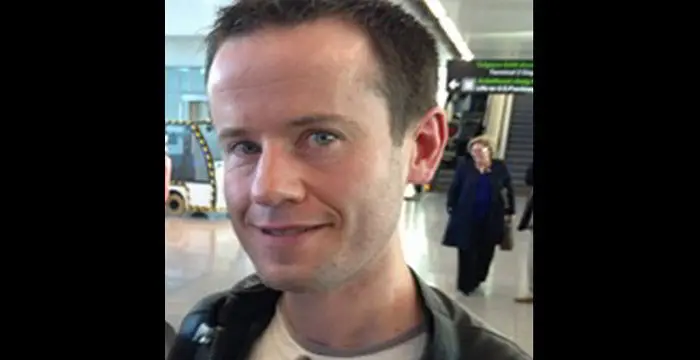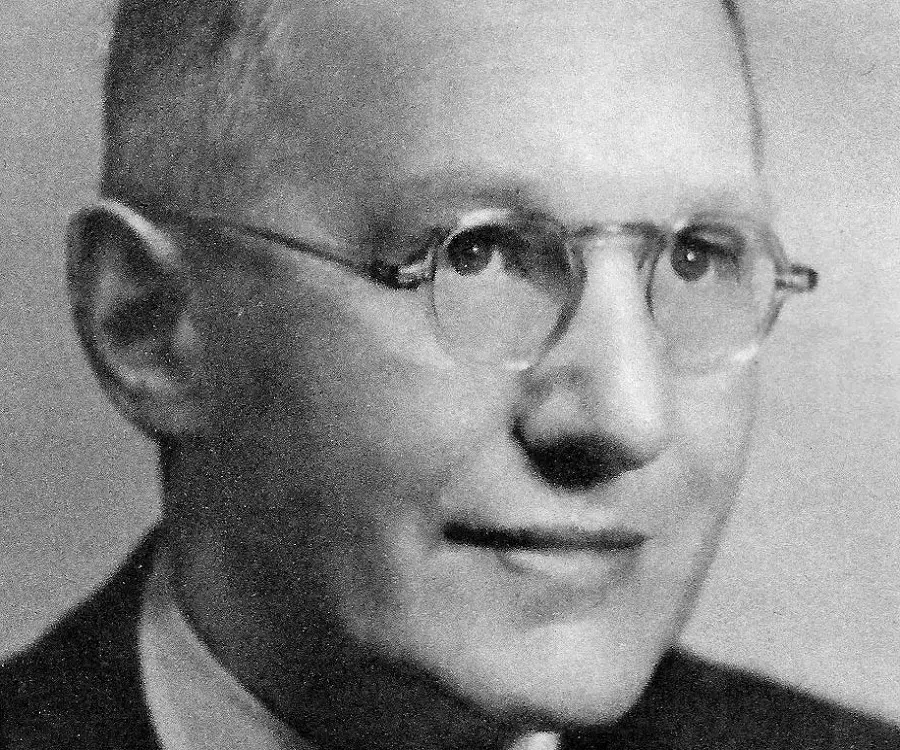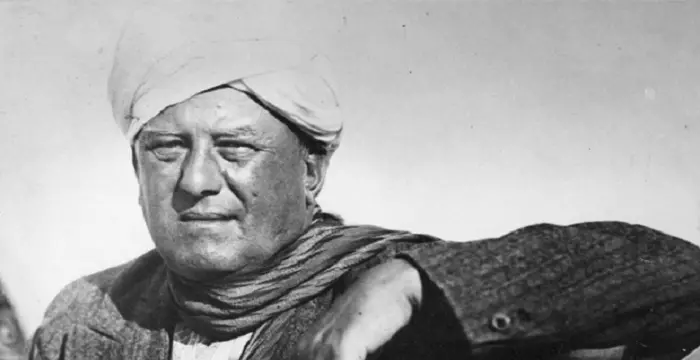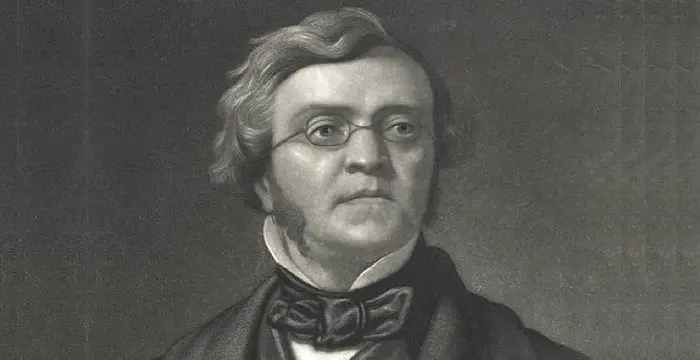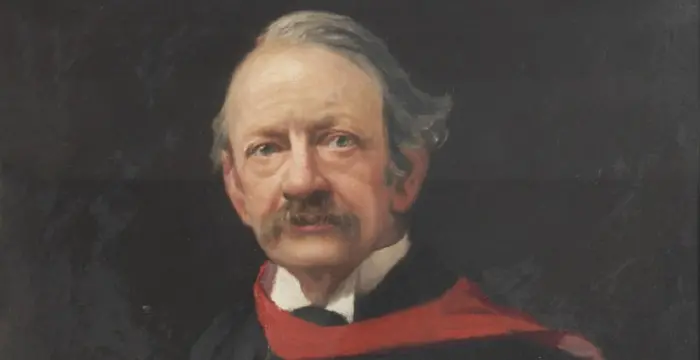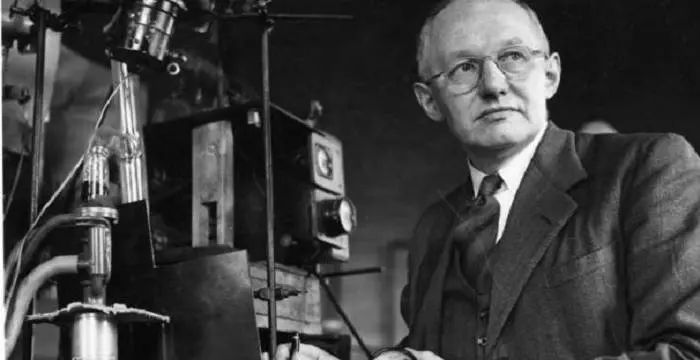
Ernest Walton - Irish Men, Timeline and Childhood
Ernest Walton's Personal Details
Ernest Walton was an Irish physicist who shared the 1951 Nobel Prize in Physics with John Crockcroft for their work on splitting the atomic nucleus
| Information | Detail |
|---|---|
| Birthday | October 6, 1903 |
| Died on | June 25, 1995 |
| Nationality | Irish |
| Famous | Trinity College, Cambridge, Trinity College, Dublin, Scientists, Physicists, Irish Men |
| Known as | Ernest Thomas Sinton Walton |
| Universities |
|
| Notable Alumnis |
|
| Birth Place | Dungarvan |
| Religion | Methodism |
| Gender | Male |
| Sun Sign | Libra |
| Born in | Dungarvan |
| Famous as | Physicist |
| Died at Age | 91 |
// Famous Irish Men
Greg Horan
Greg Horan is the elder brother of 'One Direction' member Niall Horan. Check out this biography to know about his family, personal life, relationships, etc.
Jack Duff
Jack Duff is a music artist from Ireland. Check out this biography to know about his family, personal life, including his birthday, age, etc.
Barry Herridge
Barry Herridge is an Irish psychotherapist and the fourth husband of famous Irish singer and songwriter Sinéad O’Çonnor. Check out this biography to know about his childhood, family, personal life, etc.
Ernest Walton's photo
Who is Ernest Walton?
Ernest Walton was an Irish physicist who shared the 1951 Nobel Prize in Physics with John Crockcroft for their work on splitting the atomic nucleus. He was first person in the history to artificially split the atom and was instrumental in the development of nuclear power. Born to a Methodist minister father and his childhood saw him moving from town to town on a regular basis. He studied as a boarder at the Methodist Belfast College and excelled in science and mathematics. He won scholarships to Trinity College, Dublin for studying mathematics and science. He completed his bachelor’s and master’s degree from Trinity and thereafter got a research fellowship to work as a researcher at Trinity College, Cambridge. At Cambridge University, he worked at the famous Cavendish Laboratory under Lord Rutherford and before long he started working in collaboration with John Cockcroft on atom splitting that opened up a new chapter in modern nuclear physics. It also led to the confirmation of the theories pertaining to the atomic structure that were propounded by other scientists. Subsequently he started working at Trinity College, Dublin as a fellow and spent the rest of his career at the college. He was made the Erasmus Smith Professor of Natural and Experimental Philosophy at Trinity College.
// Famous Physicists
Henry Cavendish
Henry Cavendish was a theoretical chemist and physicist, renowned for discovery of hydrogen and calculation of the mass of earth. To know more about his childhood, profile, timeline and career read on
Walter Kohn
Nobel Laureate Walter Kohn was an Austrian-born American theoretical chemist and physicist. Check out this biography to know about his childhood, life, achievements, works & timeline.
Nikola Tesla
Nikola Tesla was a Serbian-American inventor, best known for his development of alternating current electrical systems. This biography of Nikola Tesla provides detailed information about his childhood, life, achievements, works & timeline.
Childhood & Early Life
Ernest Walton was born 6 October 1903, in Dungarvan, Ireland to Reverend John Walton and Anna Sinton. His father was a Methodist minister and his occupation made him move from one place to another, which meant that the rest of the family did the same. His mother passed away in 1906
Throughout his childhood he stayed in several places like Rathleake and County Monaghan among others at different stages. Initially he attended schools in Down and Tyrone before studying at Wesley College Dublin. In 1915, he joined the Methodist College Belfast as a boarder.
In 1922, he won a scholarship to study at Trinity College in Dublin. At Trinity College, he studied the courses in both mathematics honours and honours in experimental science and four years after joining the college he graduated in both. In 1927, he completed his master’s from Trinity College.
Career
In 1927, Ernest Walton was awarded a research fellowship by the Royal Commissioners for the Exhibition of 1851 and he went to Cambridge University to work in the Cavendish Laboratory under Lord Rutherford. The Department of Scientific and Industrial Research gave him a research award three years after he joined Cambridge and a year later the university awarded him his Ph.D.
He collaborated with fellow research scholar John Cockcroft in the early part of the 1930s to create an apparatus that was meant for bombarding lithium atoms with protons in order to split the nuclei inside them and the series of experiments that the two scientists conducted confirmed the theories on atomic structure that were propounded by scientists like Rutherford. It came to be known as the Cockcroft-Walton generator.
After working at the University of Cambridge for five years, he became the Clerk Maxwell Scholar at the university in 1932 and for the next two years he continued his research in the same capacity. During his time at Cambridge, he worked with some of the finest minds in science at the Cavendish Laboratory, which had four Nobel Laureates as the part of the staff.
He left the University of Cambridge in 1934 in order to join the Trinity College, Dublin, as a Fellow in the physics department. In 1946 he was appointed as the Erasmus Smith Professor of Natural and Experimental Philosophy and occupied this position till his retirement in 1974
Other than being one of the leading researchers of his time, he was also known for being a very good teacher who could break down complex theories so that it could be easily understood by students. His later career research was focussed on radiocarbon dating, hydrodynamics, microwaves, phosphorescent effect in glasses and secondary-electron emissions from surfaces under positive-ion bombardment.
In 1952, he became chairman of the School of Cosmic Physics at the Dublin Institute for Advanced Studies and in 1960 he was elected Senior Fellow of Trinity College.
Major Works
His collaboration with Cockcroft that helped in producing the Cockcroft-Walton generator that helped in confirming the atomic structure and also showed how bombardment can help split the nucleus of an atom is his most important work. It laid in starting a new era in the field of nuclear physics and he also shared the Nobel Prize in Physics for his research.
Awards & Achievements
In 1938, Walton and Cockcroft shared the Hughes Medal awarded by the Royal Society of London “for their discovery that nuclei could be disintegrated by artificially produced bombarding particles.”
In 1951, he shared the Nobel Prize in Physics with John Cockcroft for his work on ‘atom smashing’.
Personal Life & Legacy
In 1934, Ernest Walton got married to Freda Wilson, who had also been a student of the Methodist College. The couple had four children; two sons and two daughters.
Ernest Walton died on 25 June 1995, at the age of 91, in Belfast, Ireland.
// Famous Scientists
Juliane Koepcke
Juliane Koepcke is a German-Peruvian biologist, who was the lone survivor among the 92 passengers and crew of the ill-fated LANSA Flight 508 that crashed in the Peruvian rainforest on 24 December 1971. Know more about her life in this biography.
Henry Cavendish
Henry Cavendish was a theoretical chemist and physicist, renowned for discovery of hydrogen and calculation of the mass of earth. To know more about his childhood, profile, timeline and career read on
Konstantin Tsiolkovsky
Konstantin Tsiolkovsky was a Russian rocket scientist and a pioneer of astronautics. This biography provides detailed information about his childhood, family, personal life, career, achievements, etc.
Ernest Walton's awards
| Year | Name | Award |
|---|---|---|
Other | ||
| 0 | 1951 - Nobel Prize in Physics | |
| 0 | 1938 - Hughes Medal | |
Ernest Walton biography timelines
- // 1851 To 1927In 1927, Ernest Walton was awarded a research fellowship by the Royal Commissioners for the Exhibition of 1851 and he went to Cambridge University to work in the Cavendish Laboratory under Lord Rutherford. The Department of Scientific and Industrial Research gave him a research award three years after he joined Cambridge and a year later the university awarded him his Ph.D.
- // 6th Oct 1903 To 1906Ernest Walton was born 6 October 1903, in Dungarvan, Ireland to Reverend John Walton and Anna Sinton. His father was a Methodist minister and his occupation made him move from one place to another, which meant that the rest of the family did the same. His mother passed away in 1906
- // 1915Throughout his childhood he stayed in several places like Rathleake and County Monaghan among others at different stages. Initially he attended schools in Down and Tyrone before studying at Wesley College Dublin. In 1915, he joined the Methodist College Belfast as a boarder.
- // 1922 To 1927In 1922, he won a scholarship to study at Trinity College in Dublin. At Trinity College, he studied the courses in both mathematics honours and honours in experimental science and four years after joining the college he graduated in both. In 1927, he completed his master’s from Trinity College.
- // 1932After working at the University of Cambridge for five years, he became the Clerk Maxwell Scholar at the university in 1932 and for the next two years he continued his research in the same capacity. During his time at Cambridge, he worked with some of the finest minds in science at the Cavendish Laboratory, which had four Nobel Laureates as the part of the staff.
- // 1934In 1934, Ernest Walton got married to Freda Wilson, who had also been a student of the Methodist College. The couple had four children; two sons and two daughters.
- // 1938In 1938, Walton and Cockcroft shared the Hughes Medal awarded by the Royal Society of London “for their discovery that nuclei could be disintegrated by artificially produced bombarding particles.”
- // 1951In 1951, he shared the Nobel Prize in Physics with John Cockcroft for his work on ‘atom smashing’.
- // 1952 To 1960In 1952, he became chairman of the School of Cosmic Physics at the Dublin Institute for Advanced Studies and in 1960 he was elected Senior Fellow of Trinity College.
- // 25th Jun 1995Ernest Walton died on 25 June 1995, at the age of 91, in Belfast, Ireland.
// Famous Trinity College, Cambridge
Isaac Newton
Isaac Newton was an English scientist and mathematician, who discovered gravitation and Newtonian Mechanics. Read this biography to find more on his life.
Aleister Crowley
Aleister Crowley was an occultist and ceremonial magician who founded the ethical philosophy of Thelema. This biography of Aleister Crowley provides detailed information about his childhood, life, achievements, works & timeline.
William Makepeace Thackeray
William Thackeray was an English novelist and satirist. Read this brief biography to find more on his life & timeline.
Srinivasa Ramanujan
Srinivasa Ramanujan was an Indian mathematician who made significant contributions to mathematical analysis, number theory, and continued fractions. Check out this biography to know about his childhood, life, achievements, works & timeline. .
Jared Diamond
Jared Mason Diamond is an American scientist and author reputed for his highly acclaimed and popular science books.
J. J. Thomson
J.J. Thomson was an English physicist and mathematician. This biography profiles his childhood, life, academic career, research and timeline.
Ernest Walton's FAQ
What is Ernest Walton birthday?
Ernest Walton was born at 1903-10-06
When was Ernest Walton died?
Ernest Walton was died at 1995-06-25
Where was Ernest Walton died?
Ernest Walton was died in Belfast
Which age was Ernest Walton died?
Ernest Walton was died at age 91
Where is Ernest Walton's birth place?
Ernest Walton was born in Dungarvan
What is Ernest Walton nationalities?
Ernest Walton's nationalities is Irish
What was Ernest Walton universities?
Ernest Walton studied at Trinity College Dublin,Trinity College, Cambridge, Trinity College, Cambridge, Methodist College Belfast, Trinity College, Dublin, University of Cambridge
What was Ernest Walton notable alumnis?
Ernest Walton's notable alumnis is Trinity College Dublin, Trinity College, Cambridge
What is Ernest Walton's religion?
Ernest Walton's religion is Methodism
What is Ernest Walton's sun sign?
Ernest Walton is Libra
How famous is Ernest Walton?
Ernest Walton is famouse as Physicist


